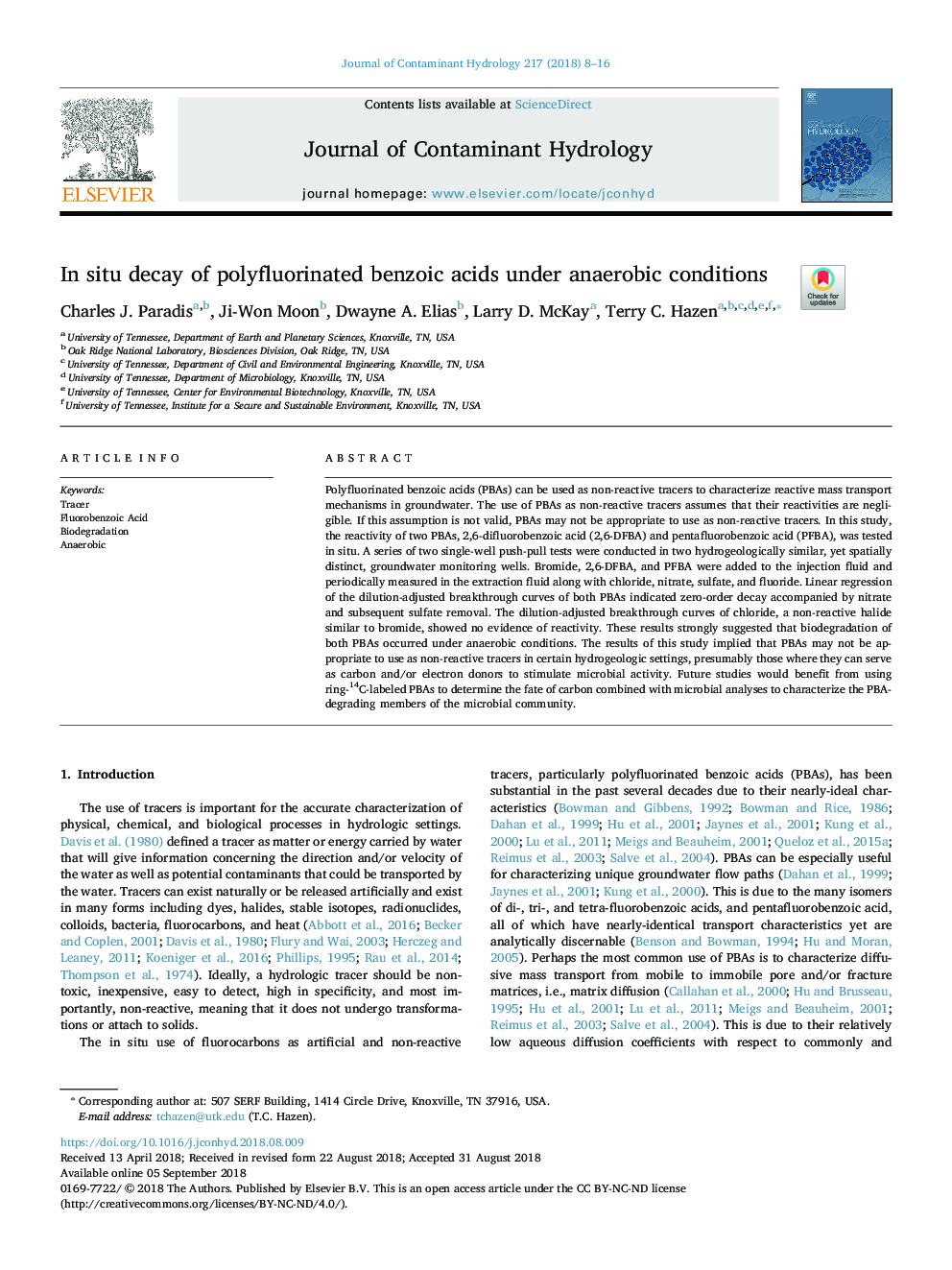| Article ID | Journal | Published Year | Pages | File Type |
|---|---|---|---|---|
| 11012957 | Journal of Contaminant Hydrology | 2018 | 9 Pages |
Abstract
Polyfluorinated benzoic acids (PBAs) can be used as non-reactive tracers to characterize reactive mass transport mechanisms in groundwater. The use of PBAs as non-reactive tracers assumes that their reactivities are negligible. If this assumption is not valid, PBAs may not be appropriate to use as non-reactive tracers. In this study, the reactivity of two PBAs, 2,6-difluorobenzoic acid (2,6-DFBA) and pentafluorobenzoic acid (PFBA), was tested in situ. A series of two single-well push-pull tests were conducted in two hydrogeologically similar, yet spatially distinct, groundwater monitoring wells. Bromide, 2,6-DFBA, and PFBA were added to the injection fluid and periodically measured in the extraction fluid along with chloride, nitrate, sulfate, and fluoride. Linear regression of the dilution-adjusted breakthrough curves of both PBAs indicated zero-order decay accompanied by nitrate and subsequent sulfate removal. The dilution-adjusted breakthrough curves of chloride, a non-reactive halide similar to bromide, showed no evidence of reactivity. These results strongly suggested that biodegradation of both PBAs occurred under anaerobic conditions. The results of this study implied that PBAs may not be appropriate to use as non-reactive tracers in certain hydrogeologic settings, presumably those where they can serve as carbon and/or electron donors to stimulate microbial activity. Future studies would benefit from using ring-14C-labeled PBAs to determine the fate of carbon combined with microbial analyses to characterize the PBA-degrading members of the microbial community.
Keywords
Related Topics
Physical Sciences and Engineering
Earth and Planetary Sciences
Earth-Surface Processes
Authors
Charles J. Paradis, Ji-Won Moon, Dwayne A. Elias, Larry D. McKay, Terry C. Hazen,
